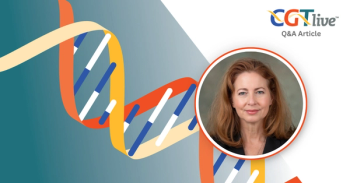
High Dose Achromatopsia Gene Therapy Yields Severe Inflammation
The dose was previously evaluated in adult patients with no comparable inflammation.
Three pediatric patients treated with the highest dose of an AAV gene therapy for
Two of the patients were participants in the CNGA3 achromatopsia trial (NCT02935517) and 1 was a participant in the CNGB3 achromatopsia trial (NCT02599922). An additional patient with CNGB3 achromatopsia developed inflammation considered a serious adverse event (AE) but not a SUSAR. The participants were treated with an increased dose of local and systemic steroids and the company stated that patients will be monitored more closely.
“Part of the reason to do a dose escalating study is to identify if there is a maximum tolerated dose. That’s exactly what we think we’ve identified here for pediatric patients. And it shouldn’t be all that surprising in the realm of drug development that a maximum tolerated dose for pediatrics might be different than a maximum tolerated dose for adult patients,” Sue Washer, president and chief executive officer, AGTC, said on a conference call with investors.1
No pediatric patients in other dose groups, as well as no adult patients treated with the highest dose, developed any comparable inflammation. AGTC stated that the SUSAR meant that they had succeeded at identifying the maximum tolerated dose for pediatric patients, and thus had met a key objective of the trial. No development plans have been modified at this time.
WATCH NOW:
AGTC reported 12-month data from the ACHMB3 trial in June 2021 that demonstrated improvements in perimetry, positive patient anecdotes, and retinal sensitivity.2 These data were from 25 participants, 21 of which were adult patients and 4 of which were pediatric patients.
In the 11 higher dose and pediatric participants, investigators observed improvements in retinal sensitivity via static perimetry in the treated eye compared with the untreated eye in 4 participants and improvements in light discomfort as measured by Ocular Pulse Amplitude (OPA) in 6 participants. Improvements in light discomfort were also observed in the untreated eyes of the 6 participants, which AGTC stated suggests cortical adaptation. AGTC is submitting phase 2 data to the FDA and expects feedback by the first half of 2022.
AGTC also reported 12-month data from the ACHMA3 trial at the same time that do not demonstrate improvements in biologic activity, however, they stated that patient-reported anecdotes are positive. The company believes that the non-functional proteins produced by the ACHMA3 mutation as apposed to the total lack of protein production in the ACHMB3 mutation may interfere with AAV-delivered protein expression. Deeper analysis will be conducted. No serious AEs related to treatment were reported in 12-month data prior to the introduction of the higher dose cohorts.
“The results regarding responders in the ACHM B3 trial are encouraging,” said investigator Rachel Huckfeldt, MD, PhD, assistant professor, ophthalmology, Harvard Medical School, in the 12-month data statement.2 “The data from the ACHM B3 trial support further clinical investigation of this candidate, and data from additional pediatric patients may support the focused development of the ACHM A3 candidate specifically in younger patients.”
REFERENCES
1. AGTC provides financial results for the fourth quarter and year ended June 30, 2021. News release. AGTC. September 23, 2021. https://ir.agtc.com/news-releases/news-release-details/agtc-provides-financial-results-fourth-quarter-and-year-ended
2. AGTC reports 12-month data from its ongoing phase 1/2 achromatopsia clinical trials showing biologic activity in patients with mutations in the ACHM B3 Gene. News release. June 24, 2021. https://ir.agtc.com/news-releases/news-release-details/agtc-reports-12-month-data-its-ongoing-phase-12-achromatopsia
Newsletter
Stay at the forefront of cutting-edge science with CGT—your direct line to expert insights, breakthrough data, and real-time coverage of the latest advancements in cell and gene therapy.


















































